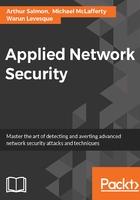
Our defense
The baseline for preventing potential security issues typically begins with hardening the security infrastructure, including firewalls, DMZ, and physical security platforms, and entrusting only valid sources or inpiduals with personal data and or access to that data. That also includes being compliant with all regulations that apply to a given situation or business, and being aware of the types of breach as well as your potential vulnerabilities. Also understanding whether an inpidual or an organization is a higher risk target for attacks is beneficial. The question has to be asked, does one's organization promote security? This is done both at the personal and the business level to deter cyber-attacks.
After a decade of responding to incidents and helping customers recover from and increase their resilience against breaches, organizations may already have a security training and awareness (STA) program, or other training and programs. As the security and threat landscape evolves, organizations and inpiduals need to continually evaluate practices that are required and appropriate for the data they collect, transmit, retain, and destroy. Encryption of data at rest/in storage and in transit is a fundamental security requirement and the respective failure is frequently being cited as the cause for regulatory action and lawsuits.
Enforce effective password management policies. Least privilege user access (LUA) is a core security strategy component, and all accounts should run with as few privileges and access levels as possible. Conduct regular security design and code reviews including penetration tests and vulnerability scans to identify and mitigate vulnerabilities. Require e-mail authentication on all inbound and outbound mail servers to help detect malicious e-mails including spear phishing and spoofed e-mails. Continuously monitor in real time the security of your organization's infrastructure including collecting and analyzing all network traffic, and analyzing centralized logs (including firewall, IDS/IPS, VPN, and AV) using log management tools and reviewing network statistics. Identify anomalous activity, then investigate and revise your view of anomalous activity accordingly. User training is the biggest challenge, but it is arguably the most important defense.